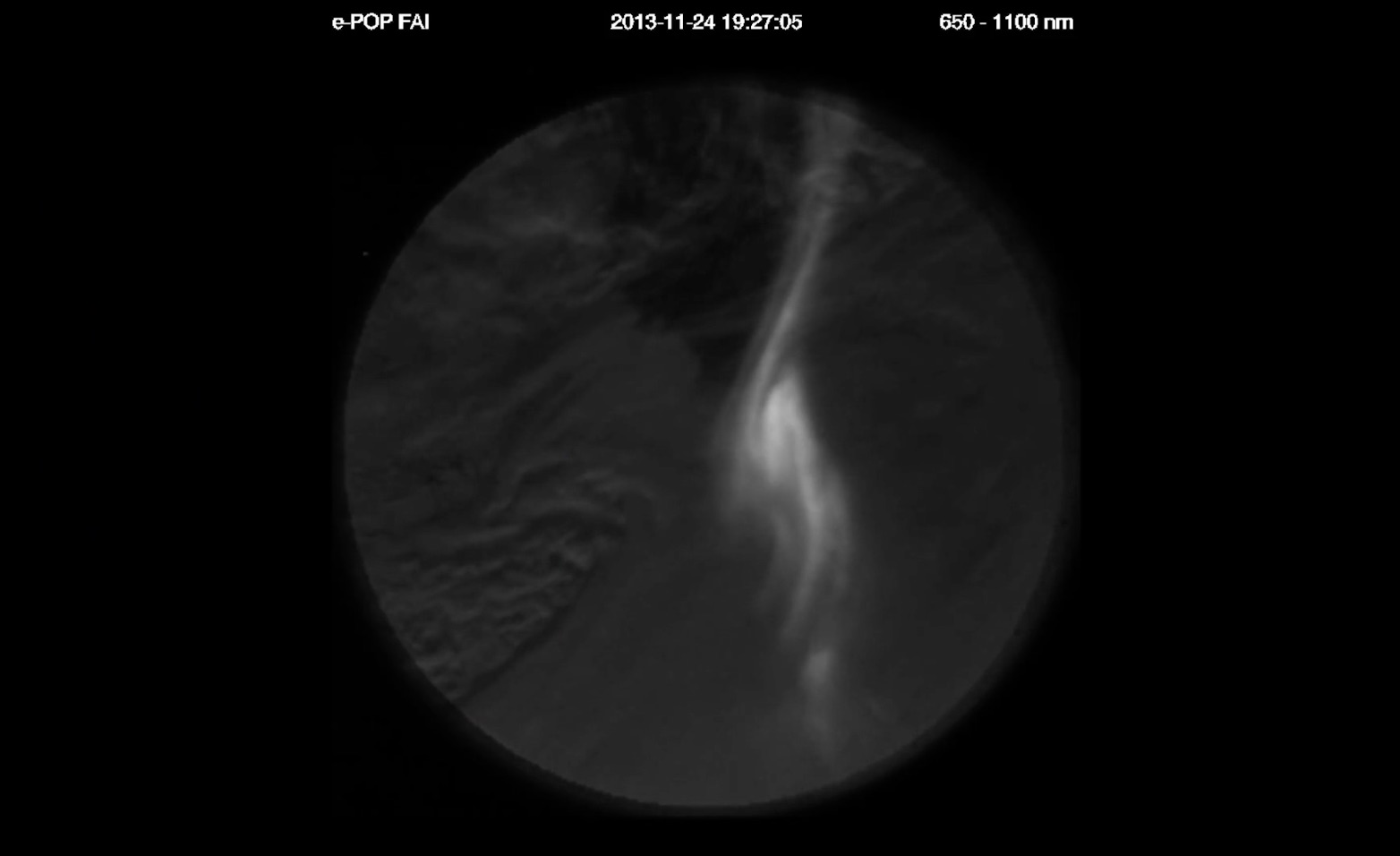Watch Auroras Shimmer from Space in This Serene Satellite View
The shimmering dance of an aurora shines in a video released recently by the European Space Agency (ESA).
An instrument called e-POP, which recently joined ESA's Swarm group of satellites, captured black-and-white footage of an aurora while flying overhead. The 1-minute video from 2013, released on ESA's website last month, zooms across an aurora in progress as clouds flow behind the flickering atmospheric lights.
Auroras are produced when charged particles from the sun interact with gas molecules high in Earth's atmosphere. As the molecules are "excited," they emit a glow — typically in hues of green, blue or red. In the Northern Hemisphere, auroras are also called the northern lights. [Amazing Auroras: Photos of Earth's Northern Lights]
The phenomenon is a beautiful sight, but it also gives scientists information about space weather, or the changing space environment close to Earth. The sun emits a constant stream of charged particles. During more intense periods of activity, these particles can produce auroras and can even damage infrastructure such as power lines or satellites.
The Swarm mission was initially made up of three ESA satellites, which have been examining Earth's magnetic field since 2013. They "have been returning a wealth of information about how our magnetic field is generated and how it protects us from dangerous electrically charged atomic particles in the solar wind," ESA officials wrote in a statement.
Late last month, an instrument from Canada's CASSIOPE (Cascade, SmallSat and Ionospheric Polar Explorer) satellite began contributing its observations. CASSIOPE, which also launched in 2013, includes an instrument called e-POP (Enhanced Polar Outflow Probe). e-POP gathers information on space storms and plasma (superheated gas) outflows from Earth's ionosphere, according to the University of Calgary, a partner on CASSIOPE.
The new collaboration will allow Canada and ESA to gather more data on the interactions between the magnetosphere and ionosphere, regions of the atmosphere that are high above Earth's surface, according to ESA. (The collaboration will collect data on things such as auroras, and Earth's magnetic field and upper-atmosphere dynamics.)
Breaking space news, the latest updates on rocket launches, skywatching events and more!
"This is a textbook example of how virtual constellations and collaborative initiatives can be realised, even deep into the missions' exploitation phases," Josef Aschbacher, ESA's director of Earth observation programs, said in the statement. "We embrace the opportunity to include e-POP in the Swarm mission, especially because it is clear that the more data we get, the better the picture we have of complex space weather dynamics."
Follow us @Spacedotcom, Facebook and Google+. Original article on Space.com.

Elizabeth Howell (she/her), Ph.D., was a staff writer in the spaceflight channel between 2022 and 2024 specializing in Canadian space news. She was contributing writer for Space.com for 10 years from 2012 to 2024. Elizabeth's reporting includes multiple exclusives with the White House, leading world coverage about a lost-and-found space tomato on the International Space Station, witnessing five human spaceflight launches on two continents, flying parabolic, working inside a spacesuit, and participating in a simulated Mars mission. Her latest book, "Why Am I Taller?" (ECW Press, 2022) is co-written with astronaut Dave Williams.

